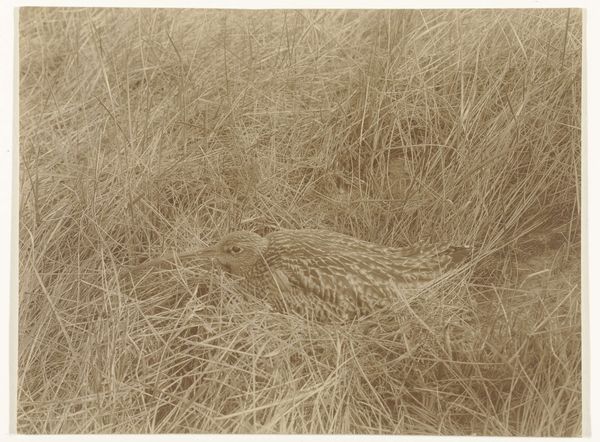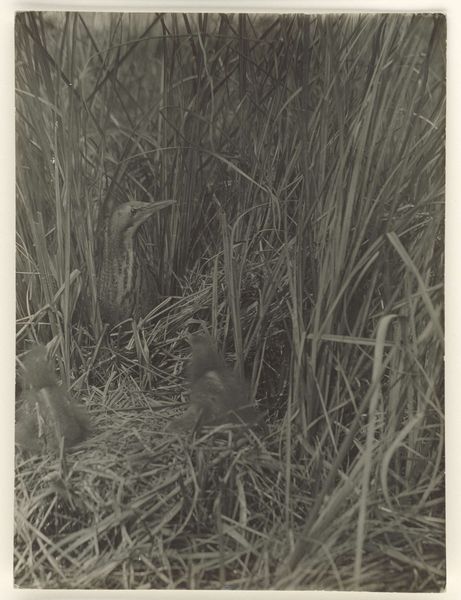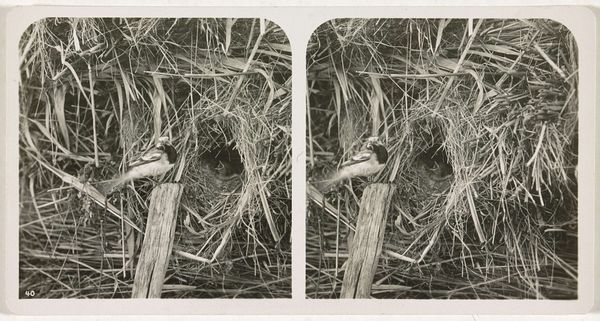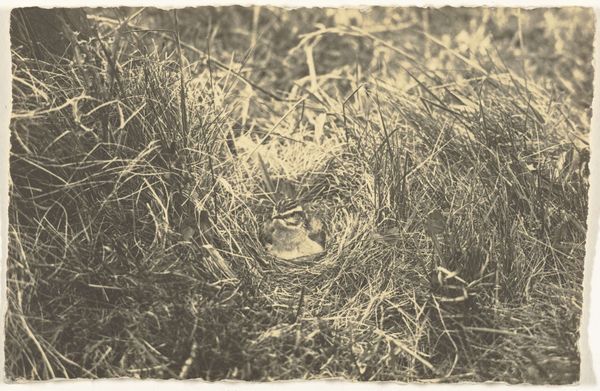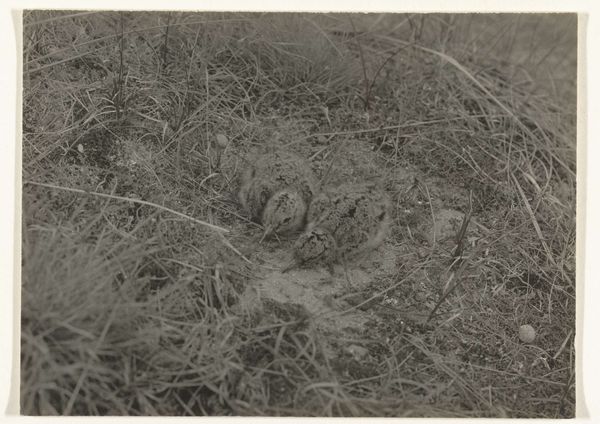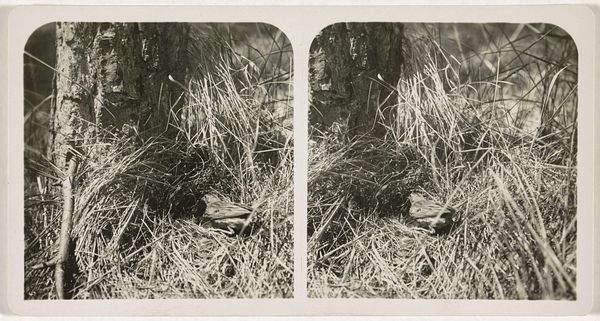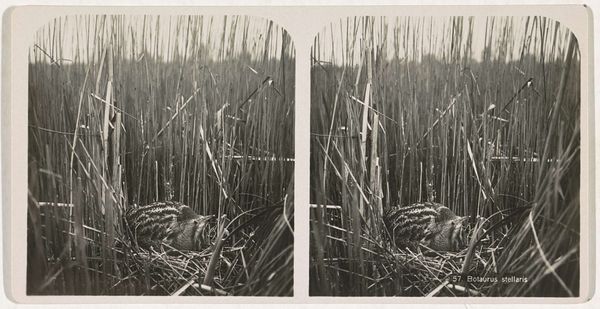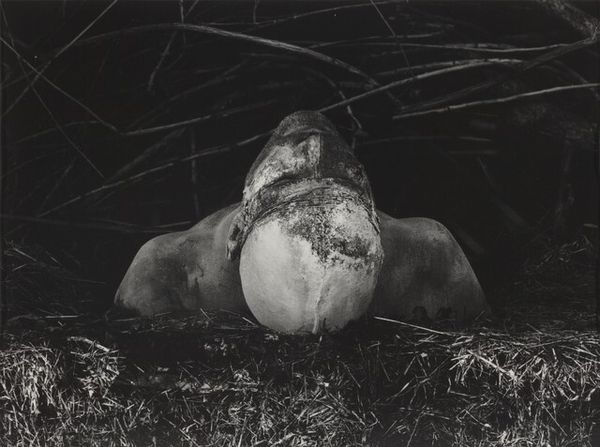
photography
#
still-life-photography
#
natural shape and form
#
landscape
#
photography
#
natural texture
#
organic texture
#
realism
Dimensions: height 165 mm, width 227 mm
Copyright: Rijks Museum: Open Domain
Curator: Immediately I sense a certain stillness and solitude; the monochrome palette evokes quiet introspection. Editor: Indeed. What we're looking at is a photograph entitled "Wulp in veld," or "Whimbrel in Field," by Richard Tepe, made sometime between 1900 and 1940. It is currently held here at the Rijksmuseum. Curator: Tepe really captures the bird's vulnerability, doesn't he? Surrounded by tall grass, yet almost imperceptible. The fragility of the animal is magnified within that natural habitat. I immediately think of eco-criticism. How does the destruction of these fields and nesting spaces impact these species, both literally and metaphorically? Editor: I appreciate how you instantly leap to the sociopolitical implications. For me, what strikes is how the texture of the feathers is subtly echoed in the blades of grass around the Whimbrel, blending figure and ground in such a nuanced way. It's almost like a dance of forms— a quiet semiotic game that keeps the viewer's eye constantly moving. The monochrome enhances that; by eliminating color, Tepe forces us to appreciate the light and shadows. Curator: It absolutely works on that level of formal composition. But looking deeper, this feels like it also has strong parallels with current discussions around the displacement and precarity experienced by marginalized communities; masked and hidden away by oppressive structures. This vulnerability is both historical and ongoing. The title even positions the Whimbrel as one object inside a broader field – it reminds me how power can position bodies as one homogenous object in the wider context of oppression. Editor: It’s interesting you bring that interpretation, because while that certainly seems implicit, it risks collapsing the artwork into purely a symbolic vehicle for predetermined political messages. But if we center instead on the artistic execution; this speaks volumes about his masterful rendering of texture. It uses such tonal subtlety within a restrictive monochromatic scale to build up forms that draw your eye through it. Curator: I think those readings can exist simultaneously, don't you? Engaging with formalist components need not occur in opposition to analyzing the piece as part of a broader sociopolitical discourse. The formal elements give extra punch to the sociopolitical dimensions of marginalisation and hidden persecution that are evident. Editor: That tension between pure aesthetics and critical awareness will, of course, keep any discussions of art vital and relevant. Tepe's success rests, perhaps, on his sensitivity to that. Curator: Precisely. Hopefully this artwork helps each one of our listeners remember to champion similar sensitive insights during their own lives.
Comments
No comments
Be the first to comment and join the conversation on the ultimate creative platform.
